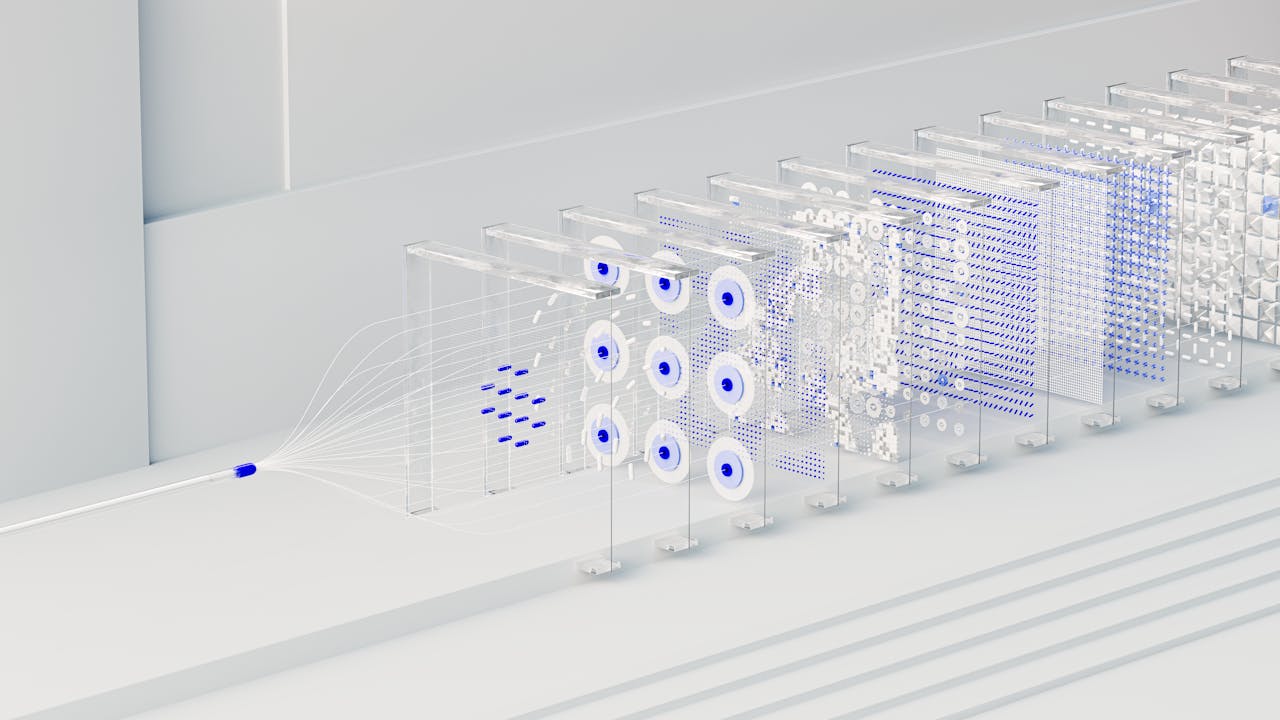We offer You Leading
AI Compliance Solutions

Which Companies Fall Under the EU AI Act?
The regulation applies to any company, whether based in the EU or not, that offers AI systems within the EU market. This includes developers, providers, and users of AI, especially those deploying high-risk AI systems in sectors like healthcare, law enforcement, and critical infrastructure.
When Do Companies Need to Comply?
Companies will need to comply with the EU AI Act after a transitional period of 18 months following its adoption in July 2024. The exact compliance deadline will be set during this period, likely giving businesses time to adjust.
What Do Companies Need to Do?
- Compliance: Ensure that their AI systems meet the requirements of the Act, including transparency, data governance, human oversight, and risk management.
- Documentation: Maintain detailed records and documentation for high-risk AI systems.
- Risk Management: Implement a robust risk management system.
- Transparency: Clearly inform users when they are interacting with AI and how the system functions.
- Human Oversight: Implement measures allowing human intervention in AI decision-making processes.
- Conformity Assessment: Conduct assessments to ensure AI systems comply with the regulation before being placed on the EU market.
Mission & Vision
Our Mission and Vision
Driving Ethical AI Practices
We are committed to guiding businesses in adopting ethical and responsible AI practices to ensure compliance and foster trust with stakeholders.

About the EU AI Act
The EU AI Act (Regulation (EU) 2024/1689) is a comprehensive legislative framework designed to regulate artificial intelligence (AI) systems across the European Union. It aims to create a unified approach to AI development, deployment, and usage within the EU, focusing on safeguarding fundamental rights, ensuring safety, and promoting innovation. The Act introduces a risk-based classification of AI systems and imposes specific obligations on high-risk AI systems. Below is a detailed overview of the key aspects of the regulation:
1. Purpose and Scope
The regulation’s primary goal is to establish a uniform legal framework for AI across the EU, promoting the development and uptake of trustworthy, human-centric AI while ensuring the protection of health, safety, and fundamental rights. The Act aims to prevent the fragmentation of the internal market due to varying national regulations and ensures the free movement of AI-based goods and services within the EU.
2. Risk-Based Approach
The AI Act categorizes AI systems based on the potential risks they pose:
- Unacceptable Risk: AI systems that pose severe threats to safety or fundamental rights are prohibited. This includes AI systems that manipulate human behavior or exploit vulnerabilities.
- High Risk: AI systems used in critical sectors, such as healthcare, law enforcement, and education, are subject to stringent requirements, including transparency, data governance, and human oversight.
- Limited Risk: AI systems with a limited risk must meet specific transparency obligations, such as informing users that they are interacting with an AI system.
- Minimal Risk: AI systems with minimal risk, such as AI in video games, are largely unregulated under the Act.
3. Requirements for High-Risk AI Systems
High-risk AI systems must comply with several mandatory requirements:
- Risk Management: Providers must establish a risk management system to identify and mitigate risks throughout the AI system’s lifecycle.
- Data Governance: AI systems must use high-quality data to minimize bias and ensure accurate outcomes.
- Transparency: AI systems must be transparent, with clear documentation that explains their functionality and potential risks.
- Human Oversight: Mechanisms must be in place to allow human intervention and control over AI systems.
- Accuracy and Robustness: High-risk AI systems must be reliable and robust, with mechanisms to handle errors or malfunctions.
4. Biometric and Emotion Recognition
The Act includes specific provisions related to biometric data, remote biometric identification systems, and emotion recognition systems:
- Biometric Data: AI systems that use biometric data for identification or categorization are subject to strict regulations, especially in contexts like law enforcement.
- Emotion Recognition: AI systems intended to detect or infer human emotions, particularly in sensitive environments like workplaces and education, are either restricted or prohibited due to their potential for misuse and bias.
5. Transparency and Accountability
Transparency is a critical aspect of the AI Act, especially for high-risk AI systems. The regulation requires that users and those affected by AI systems be informed about their interaction with AI and that they understand the system’s capabilities and limitations. Providers must maintain detailed records and documentation to ensure accountability.
6. Prohibited AI Practices
The AI Act explicitly prohibits certain AI practices that are deemed to pose unacceptable risks. These include:
- Manipulative AI: AI systems that manipulate human behavior in ways that could cause significant harm.
- Exploiting Vulnerabilities: AI systems that exploit the vulnerabilities of specific groups, such as children or those with disabilities.
- Social Scoring: AI systems that create social scoring systems by public or private entities, leading to discriminatory outcomes.
7. Compliance and Enforcement
The AI Act establishes a comprehensive framework for compliance and enforcement:
- Obligations for Providers and Deployers: Providers and deployers of AI systems are responsible for ensuring that their systems comply with the AI Act. This includes conducting conformity assessments and registering high-risk AI systems.
- Penalties for Non-Compliance: The Act imposes significant penalties for non-compliance, including fines that can reach up to 6% of a company’s global annual turnover.
8. Innovation and Regulatory Sandboxes
To foster innovation while ensuring compliance, the AI Act introduces the concept of regulatory sandboxes. These controlled environments allow AI developers to test their systems under the supervision of competent authorities, ensuring they meet the Act’s requirements before full deployment.
9. Impact on Sectors and Society
The regulation acknowledges the broad impact of AI on various sectors and societal functions, including healthcare, law enforcement, education, and public administration. It aims to balance the benefits of AI, such as improved efficiency and personalized services, with the need to protect fundamental rights and ensure public trust.
10. Global Implications
While the AI Act primarily applies to the EU, it has significant global implications. Non-EU companies that wish to operate within the EU market must comply with the regulation, potentially setting a global standard for AI governance.
11. Exemptions and Exclusions
Certain AI systems are excluded from the scope of the AI Act, such as those developed solely for military purposes or national security. Additionally, AI systems used exclusively for scientific research and development are not subject to the same level of regulation, provided they do not pose significant risks.
12. Review and Updates
Given the fast-paced nature of AI development, the AI Act includes provisions for regular reviews and updates to ensure that the regulation remains relevant and effective. The European Commission is empowered to update the list of high-risk AI systems and adapt the regulatory framework as needed.
